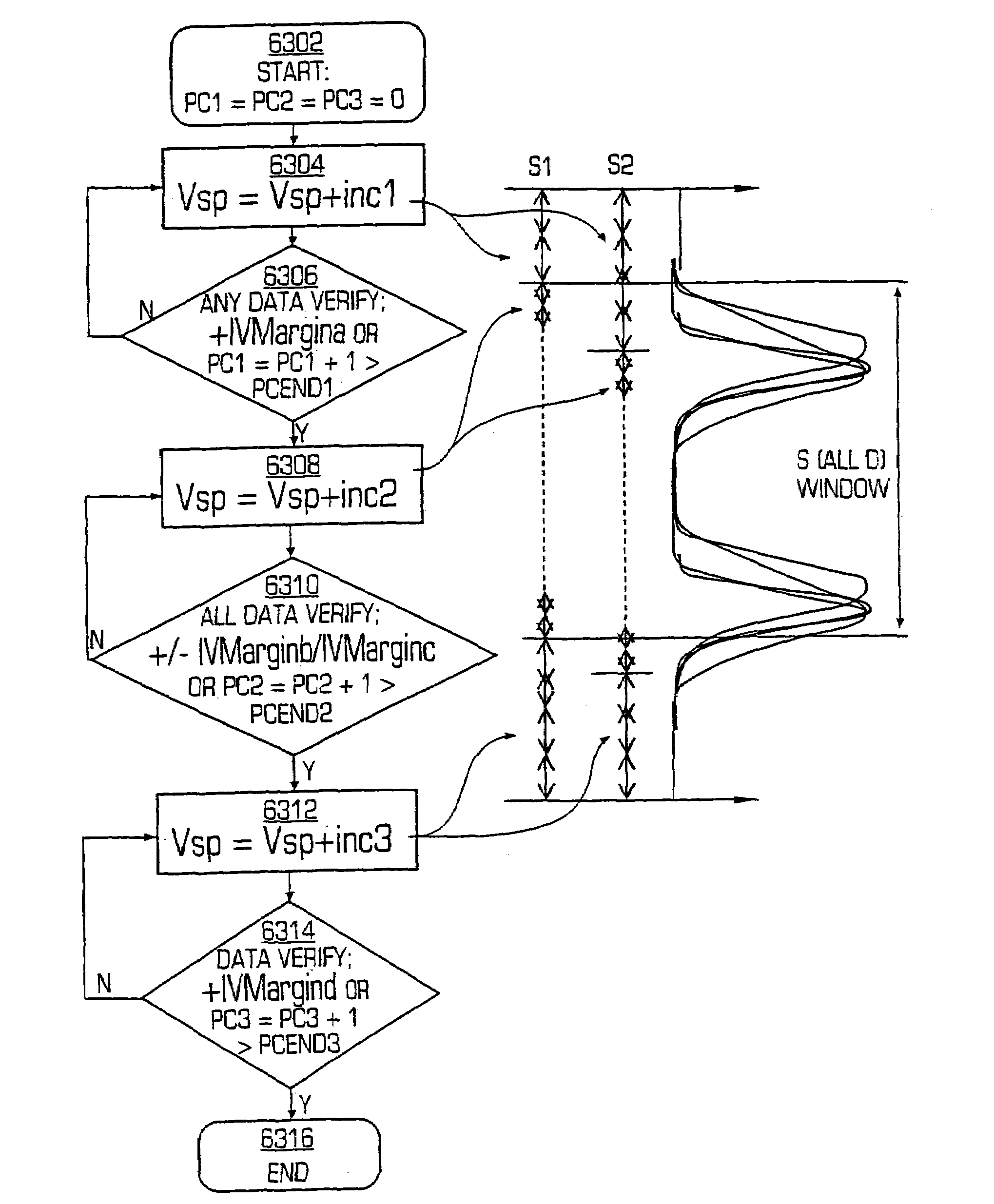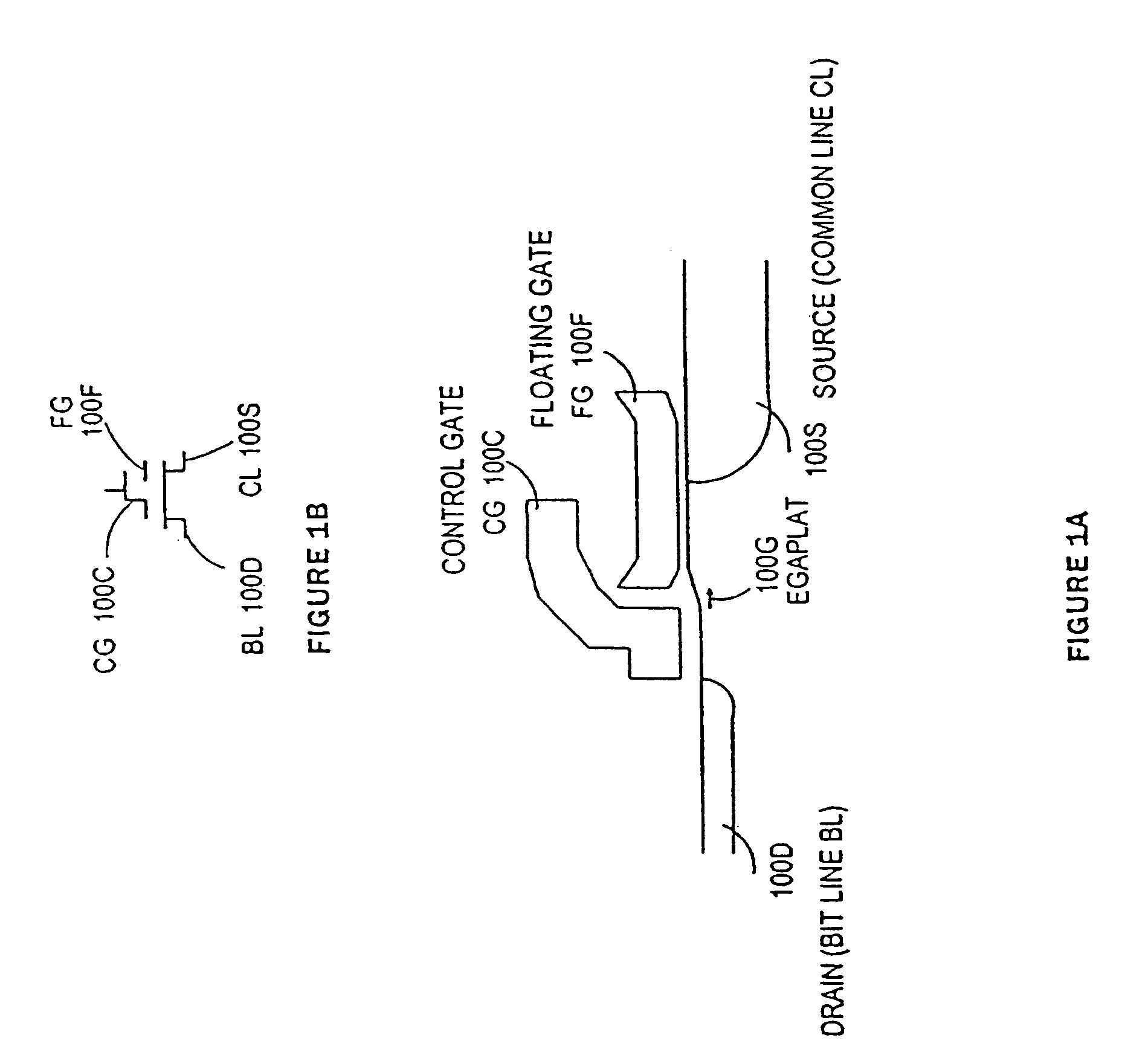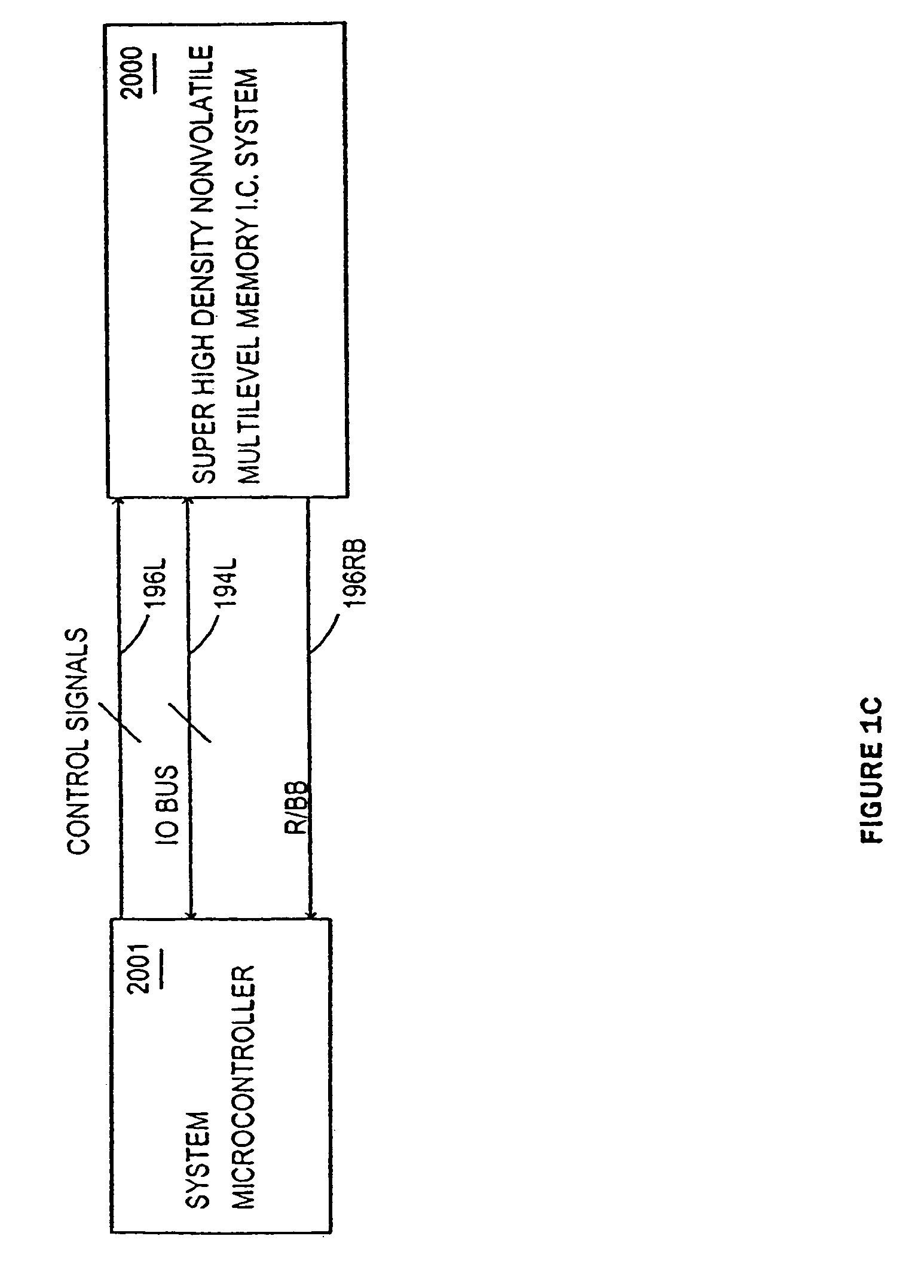Seek window verify program system and method for a multilevel non-volatile memory integrated circuit system
- Summary
- Abstract
- Description
- Claims
- Application Information
AI Technical Summary
Problems solved by technology
Method used
Image
Examples
second embodiment
[0479]FIG. 64 is a flow diagram illustrating a seek window and programming procedure in a
[0480]The algorithm controller 164 first seeks a dynamic window of a group of cells (e.g., a sector that may include for example 128 k or 32 k memory cells). The seeking of the window is done by using a combination of variable steps to seek out the first end portion of the window.
[0481]First, second, third, and fourth increment pulse counters are initialized (PC1=PC2=PC3=PC4=0) (block 6402). The programming voltage VSP is incremented by a first incremental voltage (inc1) (block 6404). The data is verified with a first margin (IVMargina) associated with reference level of the first point of the window (block 6406), and if the data is not verified and the first increment pulse counter (PC1) does not exceed a threshold (PC1+1>PCEND1), the first increment pulse counter (PC1) is incremented and the programming voltage is incremented by the first incremental voltage (inc1) (block 6404). If any data is...
third embodiment
[0482]FIG. 65 is a flow diagram illustrating a seek window and programming procedure in a
[0483]The algorithm controller 164 first seeks out a window for individual cells (e.g., D1 or D2) and then applies precision programming for the found data window to achieve precision levels.
[0484]First, second, and third increment pulse counters are initialized (PC1=PC2=PC3=0) (block 6502). The programming voltage VSP is incremented by a first incremental voltage (inctry) (block 6504). The data is verified with a first margin (IVMarginx) associated with the reference level of the first point of the window (block 6506), and if the data is not verified and the first increment pulse counter (PC1) does not exceed a threshold (PC1+1>PCEND1), the first increment pulse counter (PC1) is incremented and the programming voltage is incremented by the first incremental voltage (inctry) (block 6504). If any data is verified or the first increment pulse counter (PC1) exceeds a threshold (PC1+1>PCEND1, all da...
fourth embodiment
[0485]FIG. 66 is a flow diagram illustrating a seek window and programming procedure in accordance with a
[0486]The algorithm controller 164 first seeks out a window for individual cells (e.g., D1 or D2) and then applies precision programming for the found data window to achieve precision levels. The seeking is done by using a combination of small steps and large steps to seek out the first end portion of the window.
[0487]First, second, third, and fourth increment pulse counters are initialized (PC1=PC2=PC3=PC4=0) (block 6602). The programming voltage VSP is incremented by a first incremental voltage (inc1) (block 6604). The data is verified with a first margin (IVMargina) associated with the reference level of the first point of the window (block 6606), and if the data is not verified and the first increment pulse counter (PC1) does not exceed a threshold (PC1+1>PCEND1), the first increment pulse counter (PC1) is incremented and the programming voltage is incremented by the first in...
PUM
 Login to View More
Login to View More Abstract
Description
Claims
Application Information
 Login to View More
Login to View More - R&D
- Intellectual Property
- Life Sciences
- Materials
- Tech Scout
- Unparalleled Data Quality
- Higher Quality Content
- 60% Fewer Hallucinations
Browse by: Latest US Patents, China's latest patents, Technical Efficacy Thesaurus, Application Domain, Technology Topic, Popular Technical Reports.
© 2025 PatSnap. All rights reserved.Legal|Privacy policy|Modern Slavery Act Transparency Statement|Sitemap|About US| Contact US: help@patsnap.com



